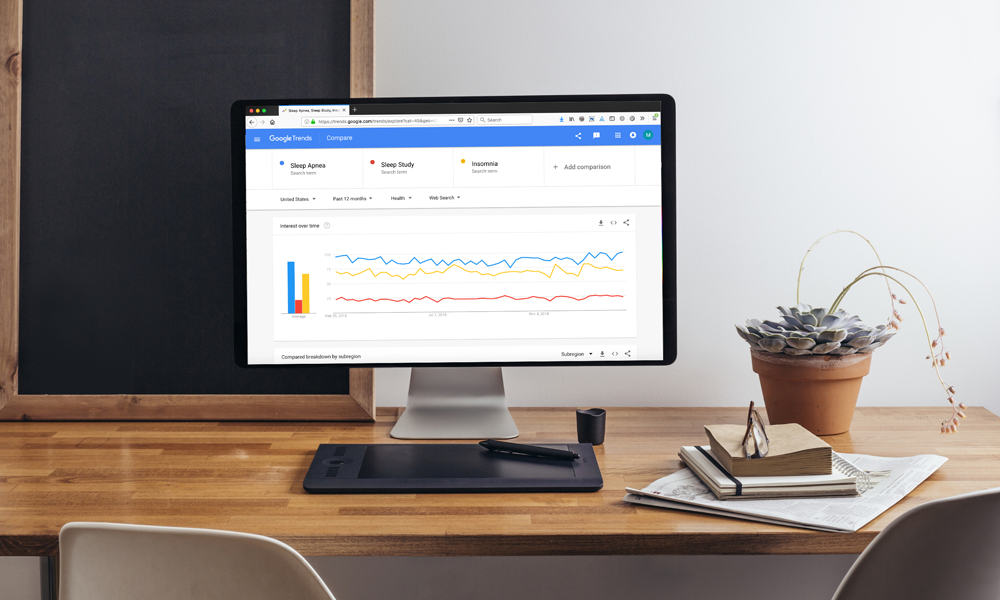Apologies if this is too basic, but I am surprised by how few writers and editors seem to use this tool when they choose what to write about.
Real-world example: The managing editor of a national healthcare publication is looking to create a package of articles about sleep. Let’s follow along.
“What do people want to know about sleep?” is her starting place. So she Googles “sleep”. In the middle of the results page, she finds this:
At the bottom of the results page, she also finds this box:
With 30 seconds of work, Google’s data has already suggested a small set of articles that would be interesting to a lot of people, such as:
- a lead article on sleeping tips
- a list of 5 common sleep disorders
- an infographic on the stages of sleep
Nothing earth-shattering there. But our hero goes further and starts plugging terms into Google Trends, which, as you know, shows comparative search volume and change over time.
First she puts in Google’s own recommendation (from above) of “sleeping tips.” Right away Google Trends offers up a few related queries:
But the ME finds these topics ‘meh’ for a serious healthcare publication. So she puts in some more terms up top.
This data suggests a headline like “Tips for a good sleep.”
Next she puts in some terms about sleep problems.
The insomnia line at the top doesn’t surprise me. But look how much interest there is in sleep apnea. It’s Googled more often than snoring!
Our managing editor can toggle back and forth, putting some of these topics back into regular Google search (like she did in step one) to keep identifying and prioritizing terms and topics.
She isn’t bound by the results. But she’s informed by them.
At the end of the process, her assignment docket looks something like:
- Sweet dreams: 10 tips for a good sleep
- Do I have sleep apnea? Symptoms and solutions
- How does
a sleep study work? - 5 surprisingly common sleep disorders
- The stages of sleep [infographic]
Data-informed content creators use search data for listening before writing instead of just for labeling after writing.


Pingback:Using analytics data to make a hit B2B article — an example